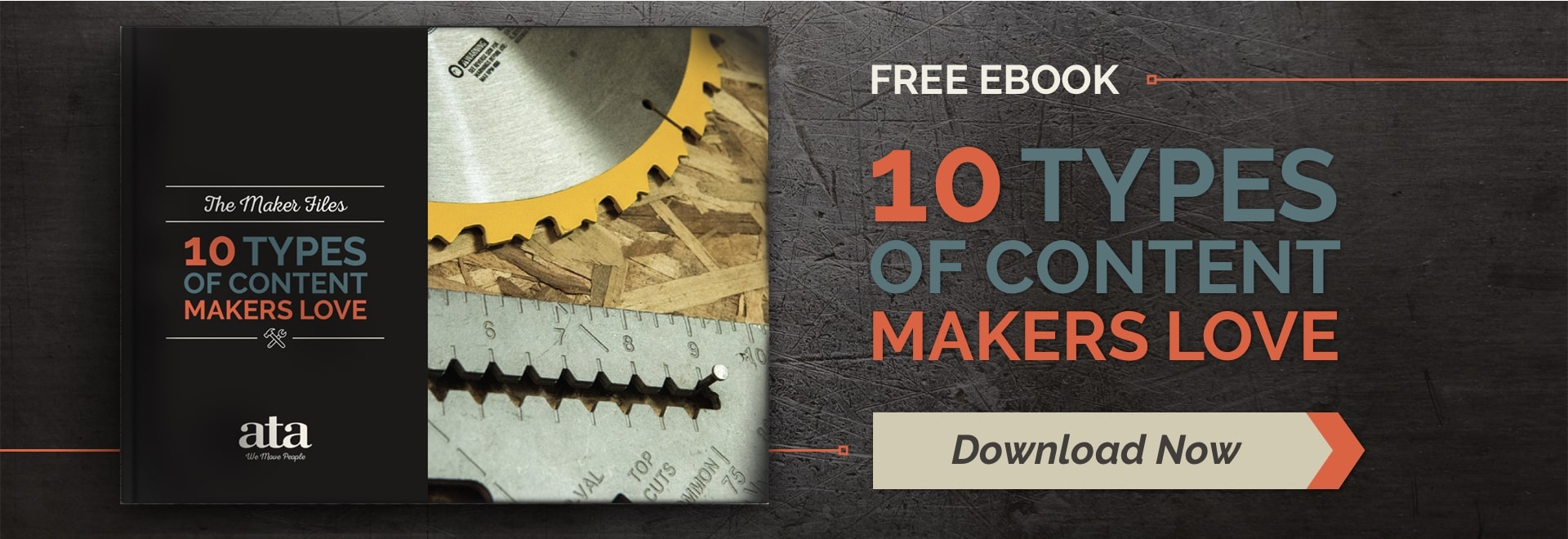 Perhaps one of the most frustrating parts of marketing is knowing who your target audiences are but not being able (or not knowing how) to reach them. Especially when time and resources are limited (and even large companies want the most value for their investments), getting creative with campaigns and promotions can be a great way to expand your audiences. Within the Maker Movement and beyond, one marketing strategy can spread your resources out while potentially doubling your audience reach — co-marketing.
Perhaps one of the most frustrating parts of marketing is knowing who your target audiences are but not being able (or not knowing how) to reach them. Especially when time and resources are limited (and even large companies want the most value for their investments), getting creative with campaigns and promotions can be a great way to expand your audiences. Within the Maker Movement and beyond, one marketing strategy can spread your resources out while potentially doubling your audience reach — co-marketing.
Co-marketing is a strategy that requires partnering with another company for cross-promotion and collaboration that usually provides mutual benefits for both brands. In this post, we'll explain the concepts behind co-marketing and take a look at some examples of successful co-marketing campaigns within the Maker Movement.
What is Co-marketing?
 Co-marketing is a marketing technique where two (or possibly more) companies collaborate on the same promotional effort. Generally, a co-marketing campaign does not focus on a new product launch (collaborating on a joint product is usually referred to as co-branding), but rather on a themed promotion that combines existing/mature properties from each brand. While these definitions can get a little murky, what's most important to remember is that co-marketing is a collaborative marketing strategy based on combining resources with another company that serves the same audience you do (or a similar audience you're trying to reach).
Co-marketing is a marketing technique where two (or possibly more) companies collaborate on the same promotional effort. Generally, a co-marketing campaign does not focus on a new product launch (collaborating on a joint product is usually referred to as co-branding), but rather on a themed promotion that combines existing/mature properties from each brand. While these definitions can get a little murky, what's most important to remember is that co-marketing is a collaborative marketing strategy based on combining resources with another company that serves the same audience you do (or a similar audience you're trying to reach).
Here are some more of the elements that make co-marketing campaigns unique:
- In co-marketing, you aren't partnering with a direct competitor, but rather a brand that serves and appeals to the same audiences you target.
- You'll be tasked with creating an interesting concept that shows the connection between the two brands and convinces each of your audiences why the other brand is worth looking into.
- Co-marketing requires both strategy and collateral created with shared expenses, but once those are in place the campaign can run for an extended period of time.
- Co-marketing can come in the form of ad campaigns, contests, special events, promotional product offers, digital content, and more.
The big idea behind co-marketing is that by cross-promoting your brands or products, both you and your partner receive some kind of mutual benefit. Those benefits don't have to be identical for both sides, but the best co-marketing partnerships provide value not only for you and your partner but also your customers as well.
Co-marketing Case Study in the Maker Movement

With the driving concepts behind co-marketing in mind, we'd like to use a few examples to illustrate what co-marketing looks like in action. While any brand from any industry could potentially participate in a co-marketing strategy (some notable examples are the "Intel Inside" campaign and Red Bull's tie-in with Go Pro), we're going to break down a successful co-marketing campaign that focuses on today's maker audiences: the partnership between Etsy and General Assembly.
Etsy is a superpower in the Maker Movement, providing not only an e-commerce platform for makers to sell their work but also a hub for purchasing craft supplies, tracking crafting trends, and learning new crafting and business skills. However, Etsy certainly exists on the artistic, handmade end of the maker spectrum, but that only represents part of everything the Maker Movement encompasses. By definition, the Maker Movement also incorporates those who take technology into their own hands to create something new, from apps and software to devices and robotics. In partnering with General Assembly, one of the world's top coding bootcamps, Etsy has taken a step toward uniting those two sides of the movement.
Through co-marketing, Etsy and General Assembly are able to cross-promote their brands by offering live Craft Party events around the world where crafters get the chance host and attendees get the chance to make and take a project and/or learn about coding, design, and other digital tools. By combining resources, collaborating on events and planning, and supporting each others' strengths, Etsy and General Assembly gain exposure to a variety of makers that either would need much more time and resources to reach on its own. And at the same time, the brands are able to offer exciting new opportunities for makers while bringing their community together. If you decide to give co-marketing a shot, keep in mind the mutual benefits everyone involved can share when shaping your partnership strategy. 



